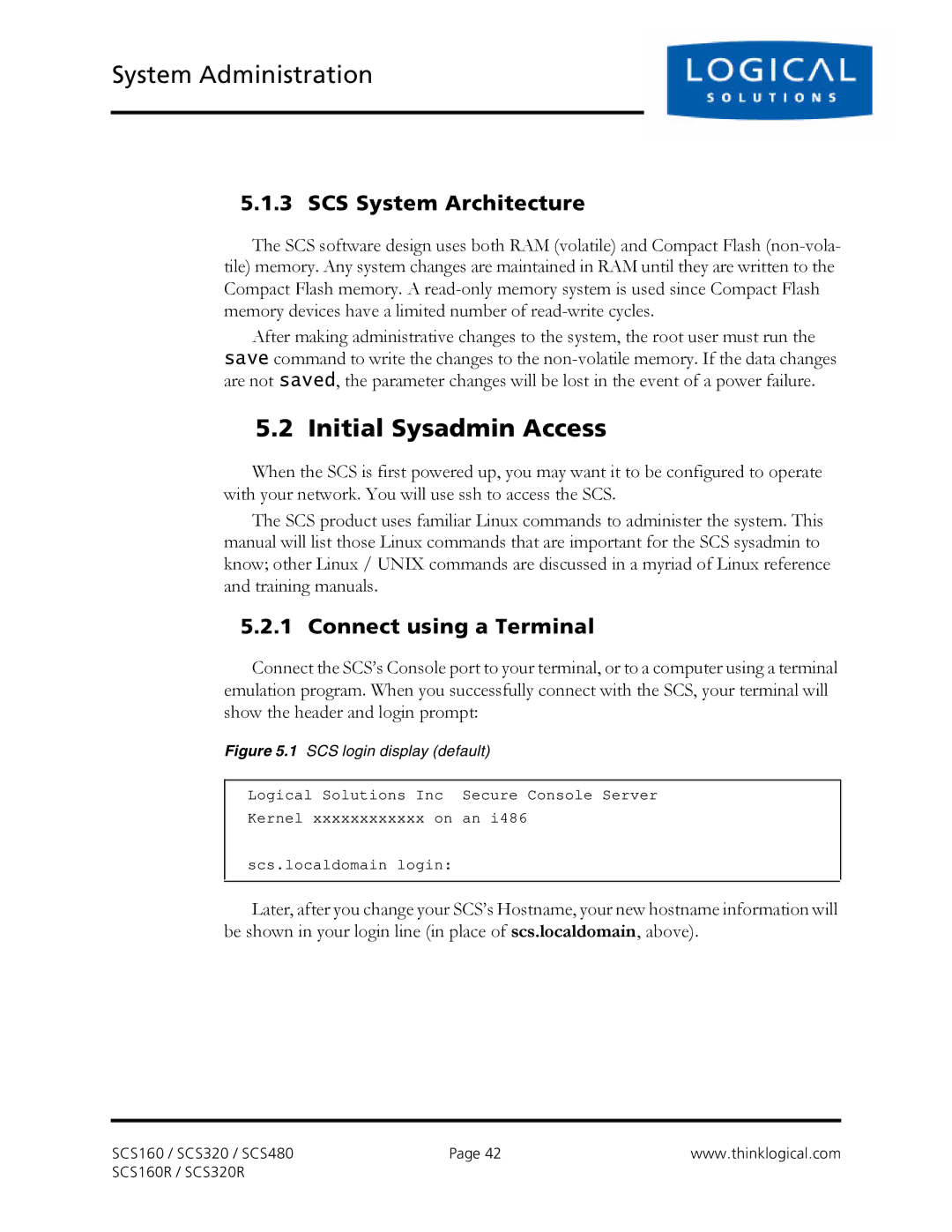
System Administration
5.1.3 SCS System Architecture
The SCS software design uses both RAM (volatile) and Compact Flash
After making administrative changes to the system, the root user must run the save command to write the changes to the
5.2 Initial Sysadmin Access
When the SCS is first powered up, you may want it to be configured to operate with your network. You will use ssh to access the SCS.
The SCS product uses familiar Linux commands to administer the system. This manual will list those Linux commands that are important for the SCS sysadmin to know; other Linux / UNIX commands are discussed in a myriad of Linux reference and training manuals.
5.2.1 Connect using a Terminal
Connect the SCS’s Console port to your terminal, or to a computer using a terminal emulation program. When you successfully connect with the SCS, your terminal will show the header and login prompt:
Figure 5.1 SCS login display (default)
Logical Solutions Inc Secure Console Server
Kernel xxxxxxxxxxxx on an i486
scs.localdomain login:
Later, after you change your SCS’s Hostname, your new hostname information will be shown in your login line (in place of scs.localdomain, above).
SCS160 / SCS320 / SCS480 | Page 42 | www.thinklogical.com |
SCS160R / SCS320R |
|
|
